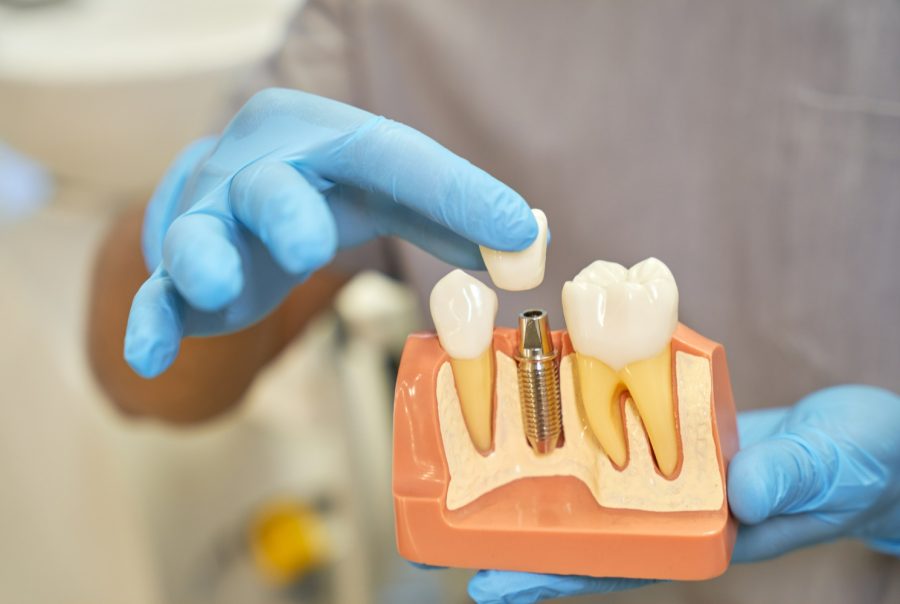Get information about frenectomy treatment with the detailed explanation of specialist dentist Seher Arseven.
Frenectomy (Tongue-Tie Procedure)

Frenectomy (Tongue-Tie Procedure) Turkey, Antalya.
The frenulum is a thin piece of tissue that connects the upper lip to the gum. Sometimes, this band can be thicker or shorter than normal, making breastfeeding difficult for the baby. A frenectomy is the surgical or laser removal of this band. A labial frenectomy specifically refers to the removal of this band on the upper lip.
How is Frenectomy Performed?
Frenectomy is a simple procedure performed under local anesthesia. In the surgical method, a small scalpel is used to cut the band. In laser frenectomy, the band tissue is removed using laser energy. Both methods are generally quick and painless.
Who Needs a Frenectomy?
Frenectomy may be recommended in the following situations:
In Infants:
- If they experience difficulty breastfeeding and this leads to inadequate weight gain,
- If it causes the mother to experience pain, cracks, or sores on the nipple,
- If the baby is not satiated despite prolonged breastfeeding sessions,
- If the baby makes clicking sounds or frequently unlatches while breastfeeding,
- If the upper lip frenulum is thick, tight, or not mobile,
- If the lower lip frenulum restricts tongue movement.
In Children and Adults:
- If there are speech disorders (especially difficulty in pronouncing sounds like “t”, “d”, “n”, “l”, “r”, “s”, “z”),
- If there are diastemas (gaps between teeth) making orthodontic treatment difficult,
- If there is gum recession exposing the tooth roots,
- If maintaining oral hygiene is difficult (pain or bleeding during brushing or flossing),
- If there are social or psychological issues (such as low self-esteem due to speech disorders or tooth gaps).
Benefits of Frenectomy
Frenectomy can help resolve the above issues and offer many benefits:
In Infants:
- Facilitates breastfeeding,
- Improves weight gain and supports growth and development,
- Reduces nipple pain for the mother and makes breastfeeding more comfortable,
- Shortens breastfeeding sessions and strengthens the bond between mother and baby.
In Children and Adults:
- Corrects speech disorders and enables clearer speech,
- Closes tooth gaps and facilitates orthodontic treatment,
- Stops gum recession and protects tooth roots,
- Improves oral hygiene and prevents gum disease,
- Reduces social and psychological issues, boosting self-confidence.
Frenectomy is a simple and safe procedure. However, like any surgical procedure, there are some risks. Therefore, it is important to discuss with a specialist and evaluate potential risks before undergoing a frenectomy.
Frenectomy Treatment Process
The frenectomy treatment process includes the following steps:
- Evaluation and Diagnosis: The first step is to consult a dentist or an ear, nose, and throat specialist. The specialist will evaluate the lip or tongue frenulum and determine the need for a frenectomy. This evaluation may include clinical examination, patient complaints, and sometimes imaging techniques like X-rays.
- Treatment Planning: If a frenectomy is deemed necessary, the specialist will create a treatment plan with you. This plan includes the method of the procedure (surgical or laser), the type of anesthesia, and post-procedure care instructions.
- Procedure: The frenectomy takes about 15-30 minutes. In surgical frenectomy, the band tissue is cut with scissors or a scalpel. In laser frenectomy, the band tissue is vaporized with laser energy. Both methods are painless and result in minimal bleeding.
- Post-Procedure Care: After the procedure, the specialist may recommend medications to control pain and mouth rinses to speed up healing. You may need to consume soft foods and maintain oral hygiene for a few days.
You may need a follow-up appointment a few weeks after the procedure to evaluate healing and check for possible complications.
Cost of Frenectomy
In Turkey, as of 2024, the cost of a frenectomy ranges from 60 to 100$, as determined by the Turkish Dental Association.
Frenectomy Recovery Process
The recovery process after a frenectomy is quick and easy, but it requires a certain period for complete healing. The recovery process depends on the patient’s age, general health, the type of frenectomy (lip or tongue), and the method used (surgical or laser).
General Recovery Process:
- First 24 Hours: Mild pain, swelling, and bleeding may occur after the procedure. These are normal and will pass shortly. You can use the painkillers recommended by your doctor and apply cold compresses.
- First Week: Pain and swelling begin to decrease. Continue to consume soft foods and maintain oral hygiene. Use mouth rinses recommended by your doctor.
- Second Week: Healing continues, and most patients can resume normal activities. However, you should still avoid hard or sticky foods.
- One Month Later: Healing is complete. You can return to your normal diet and all activities.
Recovery After Surgical Frenectomy: Recovery after a surgical frenectomy may be slightly longer than after a laser frenectomy. Stitches may need to be removed, and there may be mild discomfort in the mouth during the healing process. Performing exercises recommended by your doctor can speed up the recovery process.
When to Consult a Doctor
It is important to consult your doctor if you experience the following:
- Severe pain,
- Excessive bleeding,
- High fever,
- Unhealed wound,
- Signs of infection (redness, swelling, pus).
You can discuss the frenectomy recovery process and address any concerns with your doctor.
Optimal Age for Frenectomy
The ideal age for frenectomy depends on the type and severity of the issue. In infants, if there are breastfeeding problems, the surgery is performed within the first few months. For issues like speech disorders or dental problems, the surgery may be postponed until the child is older. There are no age restrictions for adults.
Consequences of Not Removing the Frenulum
If the frenulum is not removed, it can cause various problems. These issues vary depending on the severity, location, and the age of the person. In infants, difficulty breastfeeding can lead to air swallowing, causing gas pains and discomfort. Additionally, the frenulum can cause reflux by allowing stomach contents to flow back into the esophagus.
In children, a tongue tie can restrict tongue movements, making it difficult to pronounce certain sounds, especially “t”, “d”, “n”, “l”, “r”, “s”, and “z”. A lip tie can prevent proper alignment of the teeth, causing diastema (gaps between teeth). It can also lead to gum recession and tooth decay.
In adults, a tongue tie can cause speech disorders, particularly in pronouncing certain sounds. It can also make maintaining oral hygiene difficult, leading to bad breath and gum disease. A tongue tie can exert pressure on the jaw joint, causing jaw joint pain and dysfunction.
Early diagnosis and treatment of a lip or tongue tie can prevent various health issues in both infants and adults. Therefore, it is recommended to consult a specialist if you have any suspicions. Early intervention can prevent these problems, ensuring healthy growth and development.
Seher Arseven
She graduated from Hacettepe University Faculty of Dentistry in 2016. Between 2016 and 2018, she worked at Liv Hospital. After completing a six-year training program at Gazi University Faculty of Dentistry, Department of Periodontology, she obtained her PhD. She specializes in aesthetic gingival surgeries, the treatment of gingival recessions, and gingival diseases, with her thesis focusing on peri-implantitis and implant surgeries. She has numerous national and international publications related to peri-implantitis and implant treatments. Additionally, she is skilled in advanced bone surgeries.

